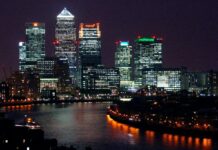Introduction
Poll Tax to Poll Tax – Potted History of Rebellion
Furious Five
FAQs – We answer your rebel FAQS
Popular on LondonNet
FAQs
Where do I go for a good demo nowadays?
It’s still the usual suspects of Hyde Park and Trafalgar Square. Demo organisers want to be as high profile possible and the two central London venues are the best bet.
Why has London never succumbed to a good old popular uprising?
Leaders of the biggest rebelions down the ages from the Peasants’ Revolt to the Chartist challenge have succumbed rather meekly to the authorities. Peasant chief Watt Tyler, for example, agreed to meet the King to discuss things but when he turned up was killed by His Majesty’s sidekicks. Confronted by armed police, Chartist leaders agreed to hand in a petition instead of marching on Parliament.
Conversely, smaller scale uprisings have often flopped through lack of organised leadership.
What constitutes a riot?
The offence of riot is set out in Section 1 of the Public Order Act 1986:
“(1) Where 12 or more persons who are present together use or threaten unlawful violence for a common purpose and the conduct of them taken together is such as would cause a person of reasonable firmness present at the scene to fear for his personal safety, each of the persons using unlawful violence for the common purpose is guilty of riot.
(2) It is immaterial whether or not the 12 or more use or threaten unlawful violence simultaneously.
(3) The common purpose may be inferred from conduct”
Clerkenwell Green – Site of various rebellious gatherings in the 19th century from Chartist meetings to the Clerkenwell Riots of 1832. Now, incidentally, home to the Marx Memorial Library.
What is the punishment for riot?
Up to ten years’ imprisonment, or an unlimited fine, or both.






